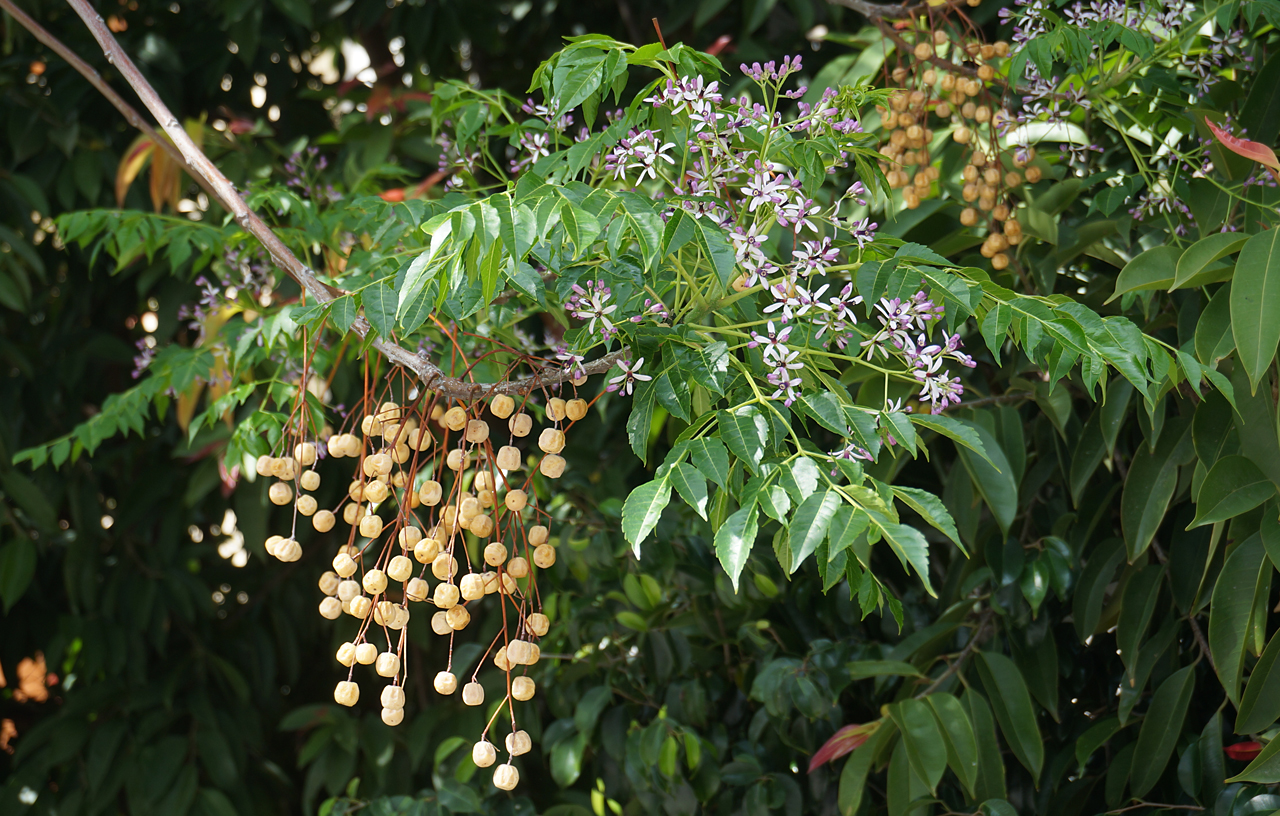Melia azadirachta
Species
Families
Local Names
Genus
Native/Introduced
DNA Barcode
Description
Melia azedarach, commonly known as the chinaberry tree, pride of India, bead-tree, Cape lilac, syringa berrytree, Persian lilac, Indian lilac, or white cedar, is a species of deciduous tree in the mahogany family, Meliaceae, that is native to Indomalaya and Australasia. The genus name Melia is derived from μελία (melía), the Greek word used by Theophrastus (c. 371 – c. 287 BC) for Fraxinus ornus, which has similar leaves. The species azedarach is from the French 'azédarac' which in turn is from the Persian 'āzād dirakht' (ازادرخت ) meaning 'free- or noble tree'.
Melia azedarach should not be confused with the Azadirachta trees, which are in the same family, but a different genus. The main utility of chinaberry is its timber. This is of medium density, and ranges in colour from light brown to dark red. In appearance it is readily confused with the unrelated Burmese teak (Tectona grandis). Melia azedarach – in keeping with other members of the family Meliaceae – has a timber of high quality, but as opposed to many almost-extinct species of mahogany, it is under-utilised. Seasoning is relatively simple, in that planks dry without cracking or warping and are resistant to fungal infection. The taste of the leaves is not as bitter as neem (Azadirachta indica).
The tough five-grooved seeds were widely used for making rosaries and other products requiring beads; however, the seeds were later replaced by plastics. The cut branches with mature fruit are sold commercially to the florist and landscaping trade particularly as a component for outdoor holiday décor. The fruits may persist for some time prior to shattering off the stem or discoloring, which occurs rapidly after a relatively short time in subfreezing weather.
Some hummingbirds like the sapphire-spangled emerald (Amazilia lactea), glittering-bellied emerald (Chlorostilbon lucidus) and planalto hermit (Phaethornis pretrei) have been recorded as feeding on and pollinating the flowers; these only take it opportunistically.
In Kenya the trees have been grown by farmers and used as fodder trees. The leaves can be fed to cattle to improve milk yields and improve farm incomes.
In Australia, particularly the suburbs of Melbourne, the tree is often used in nature strip plantings by local councils. The councils plant such trees for amenity reasons as well as environmental, social and economic benefits.









































































































































